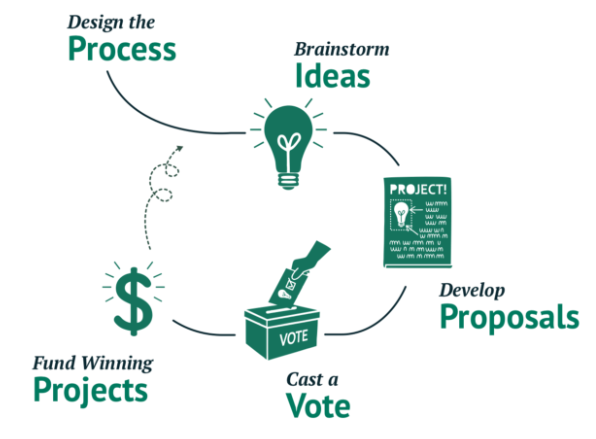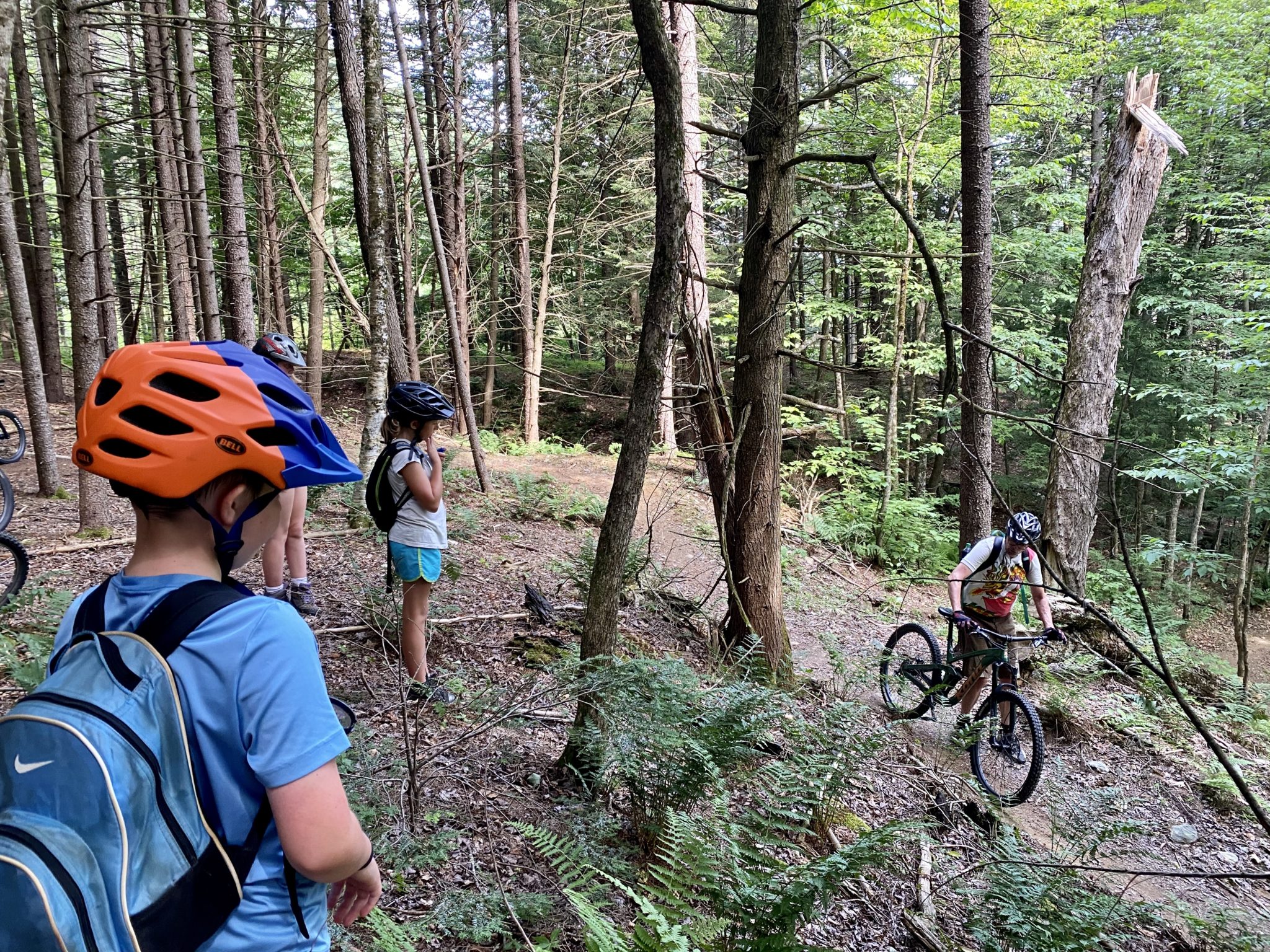Participatory budgeting (PB) is a democratic process in which members of the community decide how to spend a portion of a budget. It gives people real power over real money. People collect ideas about community needs, project proposals are created, and there is a vote on projects to fund. PB usually takes the form of community members voting on which projects they want their local government to fund. However, organizations and schools could implement a PB process as well!

This graphic, from the Participatory Budgeting Project, shows the basic framework of the PB process. It starts with a design and collection process. Once the proposals are collected, there are many different variations for how the community can vote. They may be able to rank their choices, vote on projects up to a certain dollar amount, or just vote for their top project. How the voting process works is a decision that has to be made by the organization that runs the budget, but the result will be one or more community-driven projects that are chosen to be funded. Finally, the projects can be realized.
Check out this Beginner’s Guide to Participatory Budgeting for more details about the different ways PB can be implemented.
Tips & Advice
- Start small. It’s better to have a well-run process that is limited in scope but is successful, than a larger process that fails.
- According to this case study, piloting a process is critical. This resource contains many other useful lessons as well.
- Make sure you are conducting outreach to all members of your community, especially historically marginalized groups. PB can be a great way to increase engagement and fund projects that actually benefit people in the community, but if you are only getting proposals from one group, then it will not be representative of the community as a whole. This means many aspects of the PB process have to be examined to ensure it is accessible and impactful.
- Things to consider: language barriers, transportation barriers, lack of internet access, lack of knowledge on creating proposals, etc.
- Be realistic and open with the community about the process, timeline, and financial feasibility. Make sure community members know the projects need to be financially feasible and may take time to be implemented.

